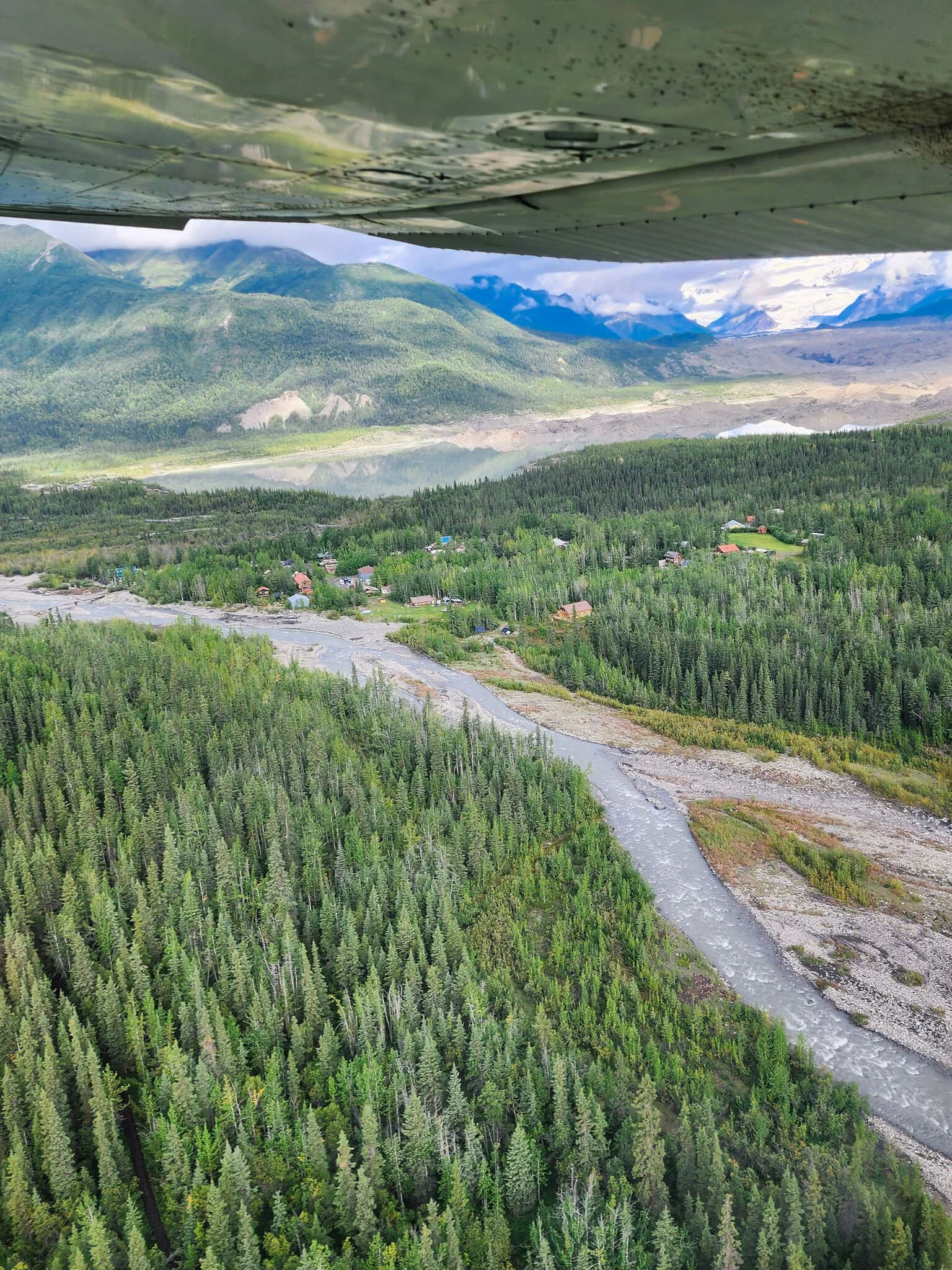What to Pack for Alaska in Autumn
*Disclosure: I only recommend products/services that I would use myself & all opinions expressed here are my own. This post may contain affiliate links meaning that, at no additional cost to you, I may earn a small commission which in turn helps fund my next adventure! Please read the Privacy Policy for more information.
One of the first thoughts that crossed my mind after I booked my trip to Alaska was “What on earth do I pack?!”. Packing for a trip to Alaska in autumn requires careful planning and preparation. The weather during this transitional season can be unpredictable, with temperatures ranging from mild to right above freezing, and conditions varying from sunny skies to heavy rain or even snow. Making sure you have the right gear and clothing can make all the difference in your comfort and enjoyment of the great outdoors in this breathtakingly beautiful state!
In this guide, we'll explore the must-have items you should pack for your Alaskan adventure during the autumn months. I'll also provide some insights into the unique weather patterns and conditions you can expect, as well as some nice-to-have items that can enhance your experience. By being well-prepared, you'll be able to fully immerse yourself in the stunning landscapes, abundant wildlife, and rich cultural experiences that Alaska has to offer during this magical time of year.
What is Alaska Like in Autumn?
Alaska in autumn is a magical time of transition as the long summer days give way to shorter periods of daylight and cooler temperatures. The fall season is short and considered Alaska’s shoulder season. I visited Anchorage and the Southcentral region in September and although half of the days were rainy, it was absolutely magical. There are far fewer tourists during this time of year and the fall-colored leaves are gorgeous.
In many areas, autumn brings colorful foliage as deciduous trees like birch and aspen turn brilliant shades of yellow and orange. The average temperatures in September and October range from the 40s to 60s Fahrenheit, with colder conditions prevailing at higher latitudes and elevations. By November, most of Alaska experiences freezing temperatures and the first snowfall.
The autumn season is short, lasting only 6-8 weeks from the beginning of September. This is when cruise ships are winding down and visitors can experience crisp air, colorful landscapes, and the gradual onset of winter on the land. The key to visiting Alaska in the Fall is dressing in warm, moisture-wicking layers; it’s essential for comfortable outdoor adventures during this time of year.
11 Must-Have Items for Alaska in the Fall
For an autumn trip to Alaska, packing the right clothing and gear is important to ensure that you stay comfortable and safe in the unpredictable weather conditions. I didn’t have a lot of these items before my trip but was so glad that I purchased them. They came in handy more than once and I stayed cozy, dry, and warm the entire trip. Here are the must-have items you should include in your Alaska packing list:
1. Warm Base Layers - Opt for moisture-wicking and quick-drying materials like merino wool or synthetic fabrics. Long-sleeved tops and bottom base layers will keep you warm and dry. These are crucial when you’re planning to do activities like a boat cruise to see the Kenai Fjords or hike at Matanuska Glacier.
2. Insulating Mid-Layers - Fleece jackets, sweaters, or vests make excellent mid-layers for trapping body heat. Look for lightweight and compressible options for easy packing.
3. Waterproof and Insulated Outer Layers - Alaska's autumn weather can bring chilly temperatures, rain… and more rain. Pack a waterproof insulated jacket, preferably with a hood, and waterproof pants or rain pants to protect you from the elements.
4. Warm Hat and Gloves - A warm hat that covers your ears and insulated gloves or mittens are essential for protecting your extremities from the cold. These come in handy for all activities, even a bike ride.
5. Sturdy and Waterproof Boots - Invest in a pair of waterproof and insulated hiking boots or winter boots with good traction. These will keep your feet dry and warm while providing stability on slippery or uneven terrain. I brought a pair of hiking boots for outdoor activities and a pair of casual waterproof boots for dinners and walking around town and that was all I needed the entire time.
6. Thermal Socks - Pack several pairs of thick, moisture-wicking socks to keep your feet warm and dry. I purchased a set of thick wool socks that were perfect for pairing with boots.
7. Layering Pieces - Bring extra layers like long underwear, fleece pants, and additional mid-layers to adjust your warmth as needed. Fleece-lined leggings were my best friend, along with a thick turtleneck.
8. Daypack - A comfortable and waterproof day pack is necessary for carrying essentials like extra layers, snacks, water, and other outdoor gear. I prefer something small that I can wear as a crossbody or around my waist instead of a backpack.
9. Sunglasses and Sunscreen - Despite the cooler temperatures, the sun's rays can still be intense, especially when reflecting off snow or water. Protect your eyes with sunglasses and your skin with sunscreen.
10. Warm Accessories - Don't forget warm accessories like a neck gaiter, scarf, or balaclava to protect your face and neck from the cold and wind. Hand warmers are also a great item to bring to throw in your pockets or in your shoes and are absolutely necessary for northern lights tours.
11. Reusable Water Bottle - There are a lot of outdoor activities in Alaska, from exploring Denali National Park to going on a backcountry adventure in Chugach National Forest, and one thing you don’t want to be without is water. Water is easily accessible at hotels and in towns, but Alaska is very rural and you’ll be much better off by bringing your own water bottle with you.
Remember, layering is key when packing for Alaska in autumn. By having the right combination of warm, waterproof, and breathable clothing and gear, you'll be prepared for the ever-changing weather conditions and ready to fully enjoy your Alaskan adventure! Trust me, being cold is no fun. It’s better to be able to take things off than not have enough layers to put on.
Nice-to-Have Items to Pack for Alaska
While the essentials will keep you warm and dry in Alaska's fall weather, a few additional items can greatly enhance your overall experience and comfort. These are items that are a good idea to pack for an Alaskan adventure any time of the year.
Binoculars - The fall season is a spectacular time for wildlife viewing in Alaska. As animals prepare for winter, they become more active and visible. A quality pair of binoculars will allow you to observe bears, moose, caribou, and other iconic Alaskan fauna from a safe distance. Most wildlife tours will have these available either complimentary or to rent.
Camera Gear - Alaska's landscapes are breathtakingly beautiful, especially in autumn with vibrant foliage, dramatic lighting, and potential for capturing the northern lights. Invest in a good camera, extra batteries, lenses, and storage to document your unforgettable Alaskan adventures. Alaska is a bucket-list destination after all!
Portable Power Bank - Keep your electronic devices charged with a reliable power bank, especially useful for extended hikes or road trips when you may not have access to power outlets. I take mine with me on every single trip.
Alaska in autumn is a spectacular time to visit! With fall foliage, abundant wildlife, and fewer crowds, it’s easy to fall in love with traveling during shoulder season. No matter what time of year you go, proper packing is crucial for an enjoyable and comfortable experience in the Alaskan weather. By bringing the must-have items like warm layers, waterproof gear, and sturdy footwear, you'll be prepared for any adventure that comes your way. The nice-to-have items, such as binoculars and a portable power bank, can help make your time in Alaska even more memorable.
Remember, the key to a successful Alaska trip in the fall is being prepared for the changing conditions and embracing the unique beauty of the season. You will most likely get rained on, but if you make sure you have everything on this list, you’ll feel great the entire time! So, pack wisely, plan ahead, and get ready to create unforgettable memories in the breathtaking Alaskan wilderness during the autumn months.
Happy travels!
-Tess
Looking for more information about Alaska? Check out these articles!
Tess Arnold
Hi! I’m Tess, founder of TravelingTessie.com, and not only do I love to travel, but I love immersing myself in new places and finding off the beaten path experiences wherever I go! I’ve lived in 4 different states & traveled to 13 countries and counting. I believe that tourism is meant to benefit both visitors and locals alike—and I want to bring that idea back into the travel industry by highlighting companies run by locals such as tours, hotels, restaurants, and more. On Traveling Tessie you can find hidden gems in top destinations around the world, travel tips, detailed city guides, and tons of inspiration for your next trip! If you love travel as much as I do, then please join me on this journey! I hope you enjoy my content as much as I enjoy providing it for you!

















